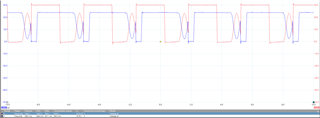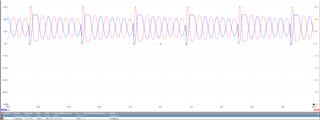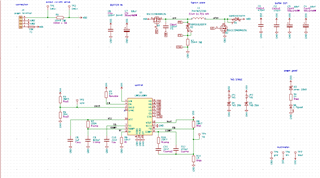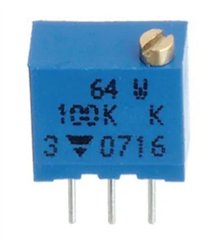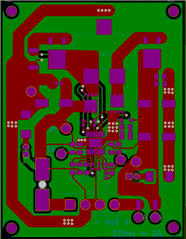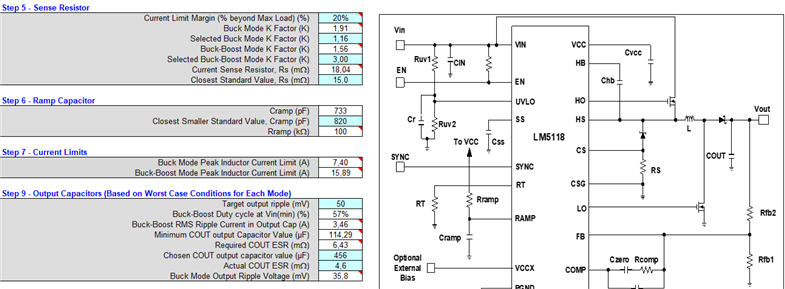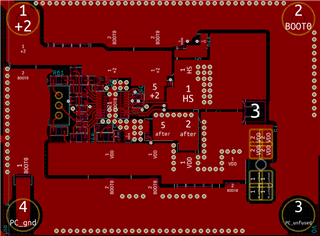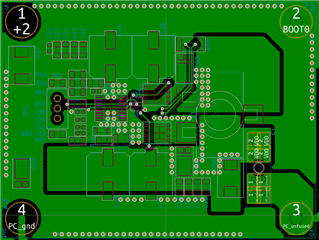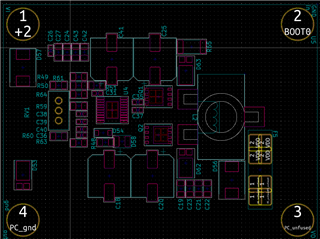hi,
i am boulding a powersupply that i can use in multiple applications. the fist one is a stable and protected automotive powersupply for an industrial pc on a trailer.
24V 3A. i have used weebbench power designer to assemble the first prototype. after testing i am pleased i got it to work but am not yet trusting this design i have a few questions.
these are my testresoults please comment on these if this is ''good'' or not:
1: at 1.5A the inductor is already heating up say about 40 degreas celcius. as are all the capacitors (ceramic and electrolytic) in the output circuit. frequency is about 290 Khz what can i do to make the load lighter on the capacitors maybe add more to spread the laod?
2: on my scope i saw that the M2(second fet to ground) is switched on in buck mode Vin:30V at the beginning of the cycle under any load is this normal? why is it? and how does it work?
3: i have used slightley different resistors to be in the standard component range. have now an output of about 23.2V give or take. i would like to place a trimming potentiometer. is this advisable? becouse trimming potentiometers have coils of wire inside and im scared that that would couse problems. for examplt the type of POT i would use is added as attatchemtn below. please ignore the value i will use a smaller value.
4: i want to make a 12V output version as well. i can redo the design in webbench power design but is it also possible to change some resistors in the feedback circuit?
34: what changes are safe to make in the resistors of the feedback circuit. what are the rules? is it a simple resitor voltage devider or does it also influence the circuit to COMP on the LM5118?
5: at testing i also did an output short test and saw that after a few seconds rhe output diode got really hot. output voltage was very low like 0.8V or so and current 7.5A. i will be placing a 3A slow fuse at the output in my final design for the case of an output short circuit. is this normal behaviour or a foult in my design?
6: i placed a TVS diode at the output just in case. this is just from experienses with questionable buckboostconverters that are not soutible for automotive applications. does it still make sense to use it is there any rare case where this protection would be usefull?
the shots of the ociloscope are both sides of the inductor related to ground.
Red line is the high side that switches to Vin
vlue line is the low side that is connected to the output diode.
the shot that has perfect square waves is at load of 1.5A
the one with almost completeley sinusoidal waves @1.4 Mhz is no load.
other one is at 1.5A load
all are taken in buck mode at 30V Vin
at the end i want to say that i am very inpressed by the IC and the webbench designer. with little expertise on this subject i was able to bould a buckboostconverter. thank you for making that possible!



